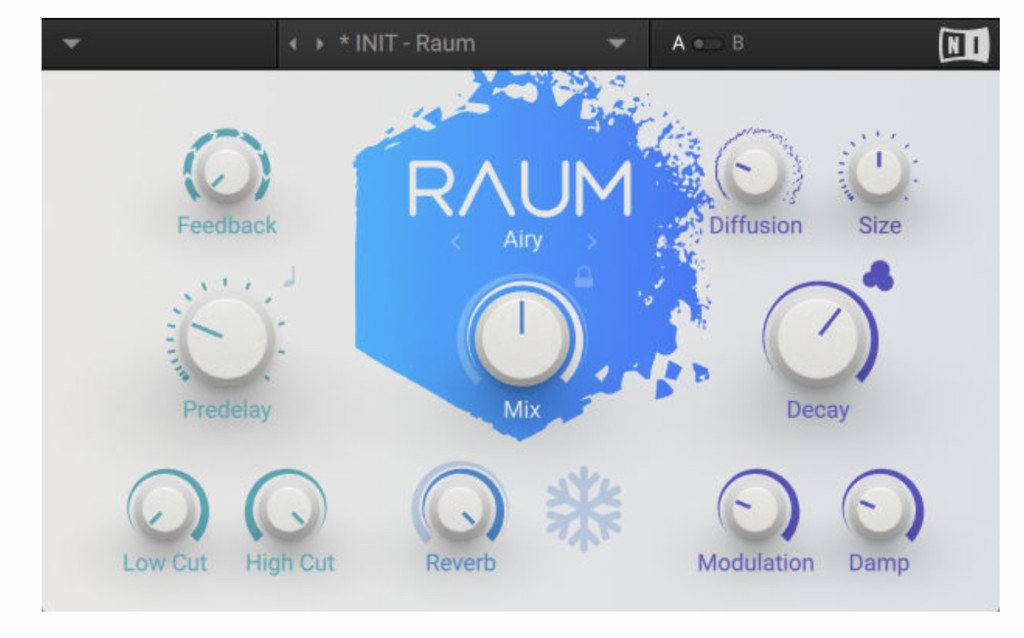NI continue their holiday tradition of giving away some software each year – and these little gems often prove something to use the whole year round.
RAUM is a versatile digital reverb from the developer. You only need an NI account to download it (which you can get for free). The comments are funny – seems this one is winning people over. It may be a victim of its own popularity, in that it seems NI’s servers are buckling a bit, but you can grab it via Native Access. Here’s a demo:
Okay, so why would you want another reverb on top of all the ones you have? The key here is that NI have combined multiple algorithms into a simple, clean interface, and packed in freeze and modulation. You can also use the predelay to turn this into a delay effect with feedback, depending on how you set the parameters. And predelay also has host tempo sync, so those effects can be clocked to your project tempo, too, for precise rhythms. With filters and feedback, you can also use this for quite some interesting flanging / comb filter effects.
It’s the sort of thing you might find in a clever Max or Reaktor patch, but now it’s here for use in any plug-in host. And as I often find with the freebies or “lite” editions, the simplicity of the UI is a draw, not a drawback – whereas many paid plug-ins do seem to have a load of knobs on them to convince you they’re worth your money.
The algorithms included:
A dense room called Grounded, which you can also turn to metallic and granular colors
A rich hall called Airy, also capable of a broad range of more experimental effects you might not normally expect of a hall
Cosmic, a more far-out ambient sound tool, which works really nicely with modulation

You should actually read the manual (seriously), as it not only includes detailed descriptions of parameters and tons of sound design tips, but also a great interview with Dr. Julian Parker. While NI had some significant downsizing and restructuring this year, Dr. Parker remains in his role as Principal Software Engineer, machine learning and DSP. That human talent has powered some of the nicest-sounding instruments around. Jan Ola Korte wrote the documentation, which is why the manual is so eminently readable.
Dr. Parker also talks about how some familiar Lexicon, Alesis, and Eventide effects influenced some of the ideas in Raum, as well as its own more modern twist – using a big delay network with feedback to produce various resonances. That approach is gaining some traction as our computers acquire more powerful CPUs.
In fact, for all the talk lately about how “nothing is new,” this gives you a better idea of how the arc of sound design tech can span some decades. The approach has been around for a while, but now we have machines capable of performing it, and music producers whose sound tastes have grown more adventurous. The intervening years arguably have provided some perspective on how best to adapt the technique to an instrument.
This one looks like one I’ll use a lot – and might even inspire a few of us to mess around with delay networks and feedback in our own DIY creations.
Get your copy here:
Get Raum [NI Free Holiday Gifts]